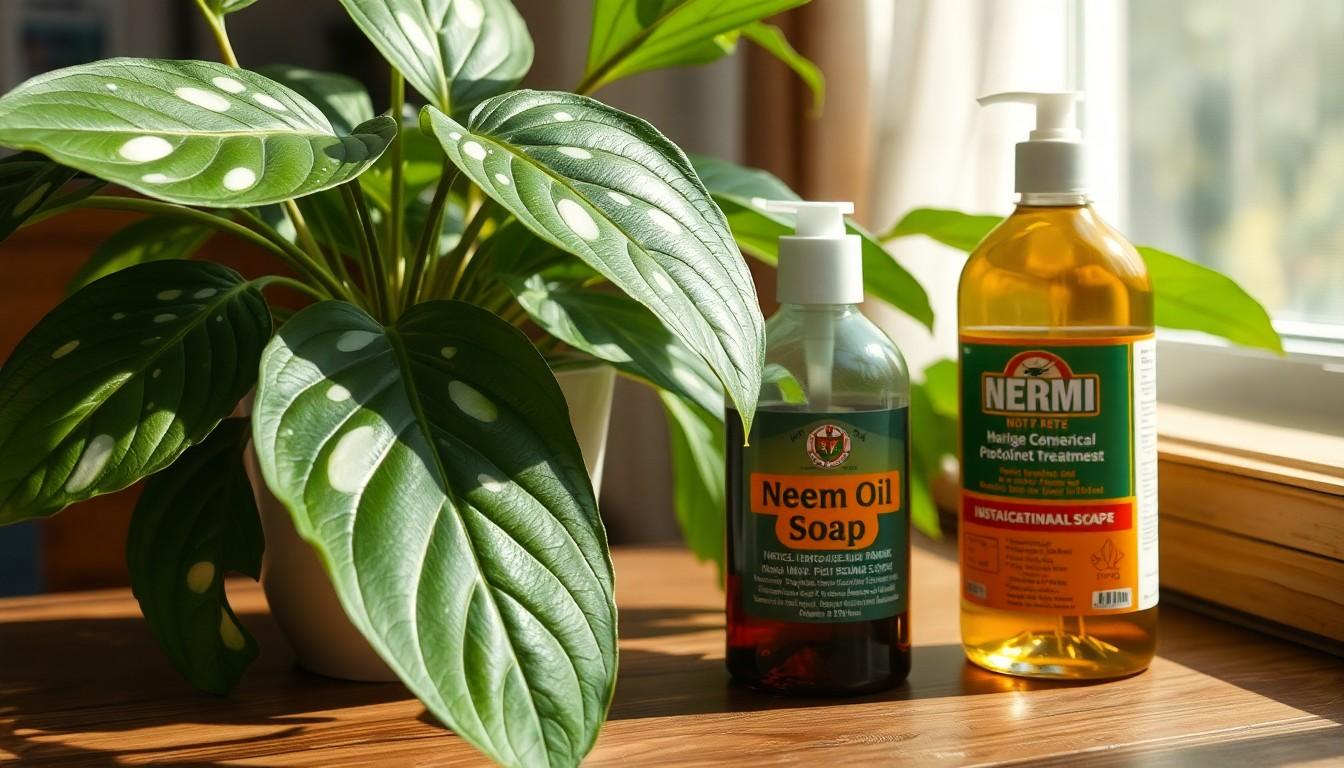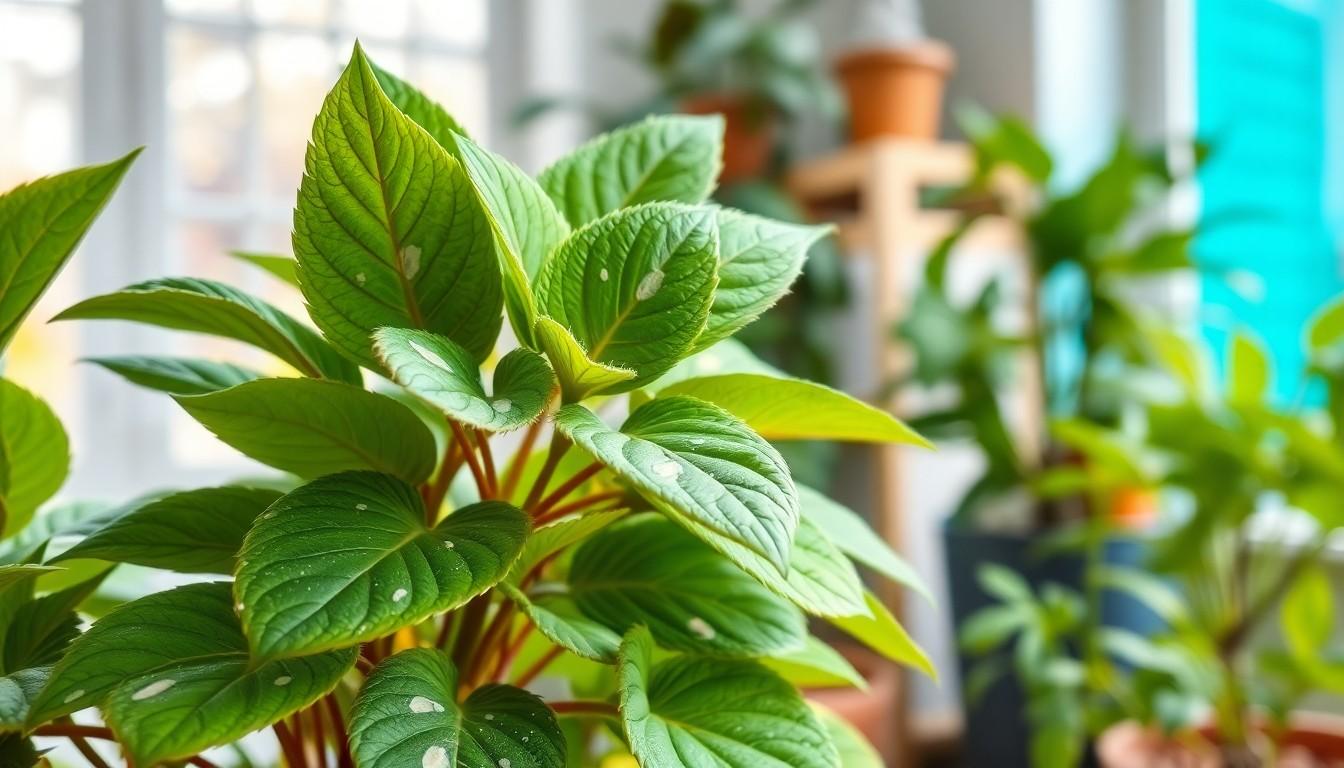Indoor plants are the green companions that brighten up any space, but what happens when those vibrant leaves start sporting white spots? It’s like they decided to throw a little confetti party, but not the kind anyone wants to celebrate. Those pesky white spots could signal a range of issues, from pests to powdery mildew, and they can put a serious damper on your plant-parenting pride.
Understanding White Spots on Indoor Plants
White spots on indoor plants often signal underlying issues that require attention. Identifying these problems promptly can preserve plant health and aesthetic appeal.
Common Causes of White Spots
Pests frequently cause white spots. Spider mites and mealybugs are two common culprits. These insects feed on plant sap, leading to damaged foliage. Powdery mildew also appears as a white coating on leaves. Humid conditions and poor air circulation often promote this fungal growth. Salts from fertilizers or hard water may accumulate on leaves, causing unsightly deposits. Over-watering can also exacerbate powdery mildew and similar issues. Each of these causes warrants evaluation for effective treatment.
Identifying the Type of White Spot
Distinguishing between pests and mildew is crucial for treatment. Examine the spots closely; pests may appear as small clusters. Mildew tends to form a flat, white layer that resembles flour. Check for webbing or sticky residue on leaves, indicating mite infestations. Leaf discoloration helps indicate the severity of an issue. Use a magnifying glass for a more detailed inspection. Take note if the spots evolve over time, which suggests an ongoing problem. Identifying the type leads to more targeted care strategies.
Treatment Options for White Spots

Identifying white spots requires immediate intervention. Various treatment options exist, ranging from natural remedies to chemical solutions.
Natural Remedies
Natural remedies offer effective solutions for white spots. Neem oil acts as a potent insect repellent and fungal treatment. Applying a diluted solution once a week helps curb pest infestations and manage powdery mildew. Soap sprays, such as insecticidal soap, can also eliminate pests like mealybugs. These sprays suffocate insects upon contact and require application every few days until improvement occurs. Additionally, maintaining proper air circulation and humidity levels can deter the growth of mold and pests, contributing to healthier plants.
Chemical Solutions
Chemical solutions provide fast-acting results for severe infestations. Commercial insecticides specifically designed for indoor plants are readily available. Following product instructions ensures safe application without harming the plants. Fungicides can treat powdery mildew effectively, applied according to label recommendations during early morning or late evening hours. Regular monitoring after treatment determines ongoing effectiveness and the need for additional applications.
Preventive Measures for Indoor Plants
Taking preventive measures can significantly enhance the health of indoor plants and minimize the occurrence of white spots.
Proper Care Techniques
Implementing proper care techniques is essential for thriving indoor plants. Watering plants at the right intervals helps prevent over-saturation, which often leads to mildew. Regularly cleaning leaves removes dust and potential pests, reducing the risk of infestations. Fertilizing adequately supports plant growth while avoiding the use of excessive fertilizers that contribute to salt buildup. Inspecting plants routinely allows for early detection of any issues. Adjusting light exposure is crucial; too much or too little light can weaken plants, making them susceptible to white spots.
Environmental Adjustments
Making certain environmental adjustments can create an optimal growth habitat. Ensuring adequate air circulation minimizes humidity around plants, which decreases the likelihood of mold formation. Adding a fan can help improve airflow, especially in spaces lacking ventilation. Maintaining consistent temperature levels protects plants from stress that may promote white spots. Grouping plants with similar humidity and light requirements can create a microclimate, enhancing their overall well-being. Utilizing humidity trays or misting can also help achieve the desired moisture balance without oversaturating the soil.
When to Seek Professional Help
Identifying persistent white spots on indoor plants can be challenging. If common treatments, such as neem oil or insecticidal soap, fail to resolve the issue within a couple of weeks, professional intervention might be necessary. Signs of severe infestation include significant leaf damage or the rapid spread of white spots across multiple plants. Many pests, like mealybugs and spider mites, thrive and spread quickly, leading to widespread damage if not managed promptly.
Additionally, if powdery mildew continues to reappear despite regular treatments, professional guidance is essential. Mold can weaken plants significantly, affecting their vitality and attractiveness. Seeking help from an expert can provide tailored solutions to specific fungal issues or insect infestations.
Another indicator for reaching out is a lack of familiarity with the types of pests or diseases affecting the plants. Consulting professionals can clarify the underlying problems and recommend appropriate treatments. Indoor plant specialists possess the knowledge and experience to address complex issues that may go unnoticed by novice caretakers.
When environmental conditions seem unmanageable, such as high humidity or persistent poor air circulation, professional advice should be prioritized. Adjusting these factors can significantly impact plant health.
In situations involving multiple plants with similar issues, seeking professional assistance can streamline treatment efforts. Professionals often assess entire collections to diagnose and treat early, preventing broader outbreaks. Each plant may respond differently to treatments, and an expert can tailor care strategies accordingly.
Conclusion
Addressing white spots on indoor plants is crucial for maintaining their health and beauty. Timely identification and treatment can prevent minor issues from escalating into significant problems. By utilizing natural remedies and ensuring optimal care practices, plant owners can create a thriving environment for their greenery.
Regular monitoring and adjustments to care routines not only enhance plant resilience but also minimize the risk of future infestations. For persistent issues, seeking professional help can provide tailored solutions, ensuring indoor plants remain vibrant and healthy. With the right approach, indoor gardening can be a rewarding experience that brings joy and satisfaction.

